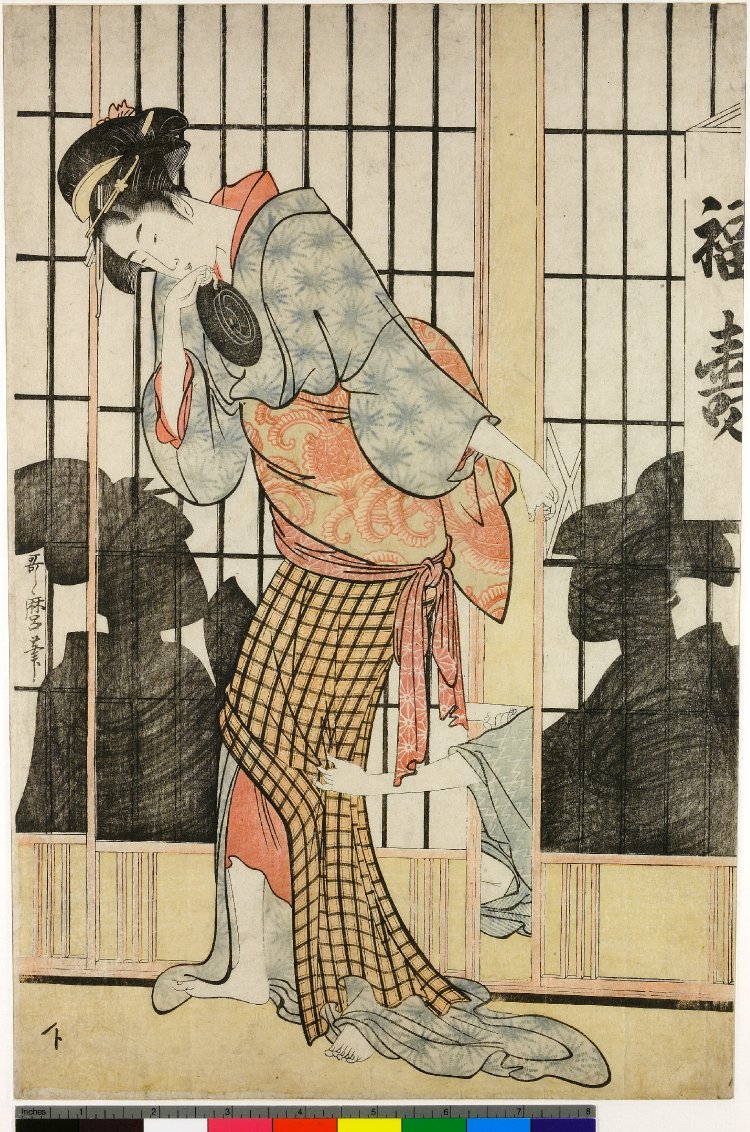
Kitagawa Utamaro – Fukuju 福寿 (The Fukuju tea-house), 1794-1795
I decided on Ukiyo-e (the genre of Japanese woodblock prints) as my subject of the Making and Breaking Narrative project as I have always wanted to create woodblock prints both in the Ukiyo-e traditional style, and also reinterpreted in a contemporary way. The complexity of the process, including the use of traditional tools and processes involved in mokuhanga (the water-based method of printmaking involved in Ukiyo-e) necessitates a dedication of reading, watching, practicing and learning vocabulary that I haven’t yet had the opportunity to do and I feel this is the perfect opportunity to dedicate that time.
I feel that it is extremely important to understand and be knowledgable about the cultural history and traditional techniques of such a genre that has had such a cultural importance in Japan and the way Japan has been perceived for centuries, before interpreting this knowledge into my own art practice.
One of the aspects of Ukiyo-e that interests me most is way in which it made art accessible to the people of Japan between the 17th and 19th centuries; Japanese screen paintings were time consuming and expensive and were reserved for the aristocracy. Ukiyo-e in comparison was much cheaper to produce in large quantities and allowed this art form to be accessible to the middle classes of Japan, who saw, often romanticised, versions of themselves and their daily lives depicted by Ukiyo-e artists.


Leave a Reply
You must be logged in to post a comment.